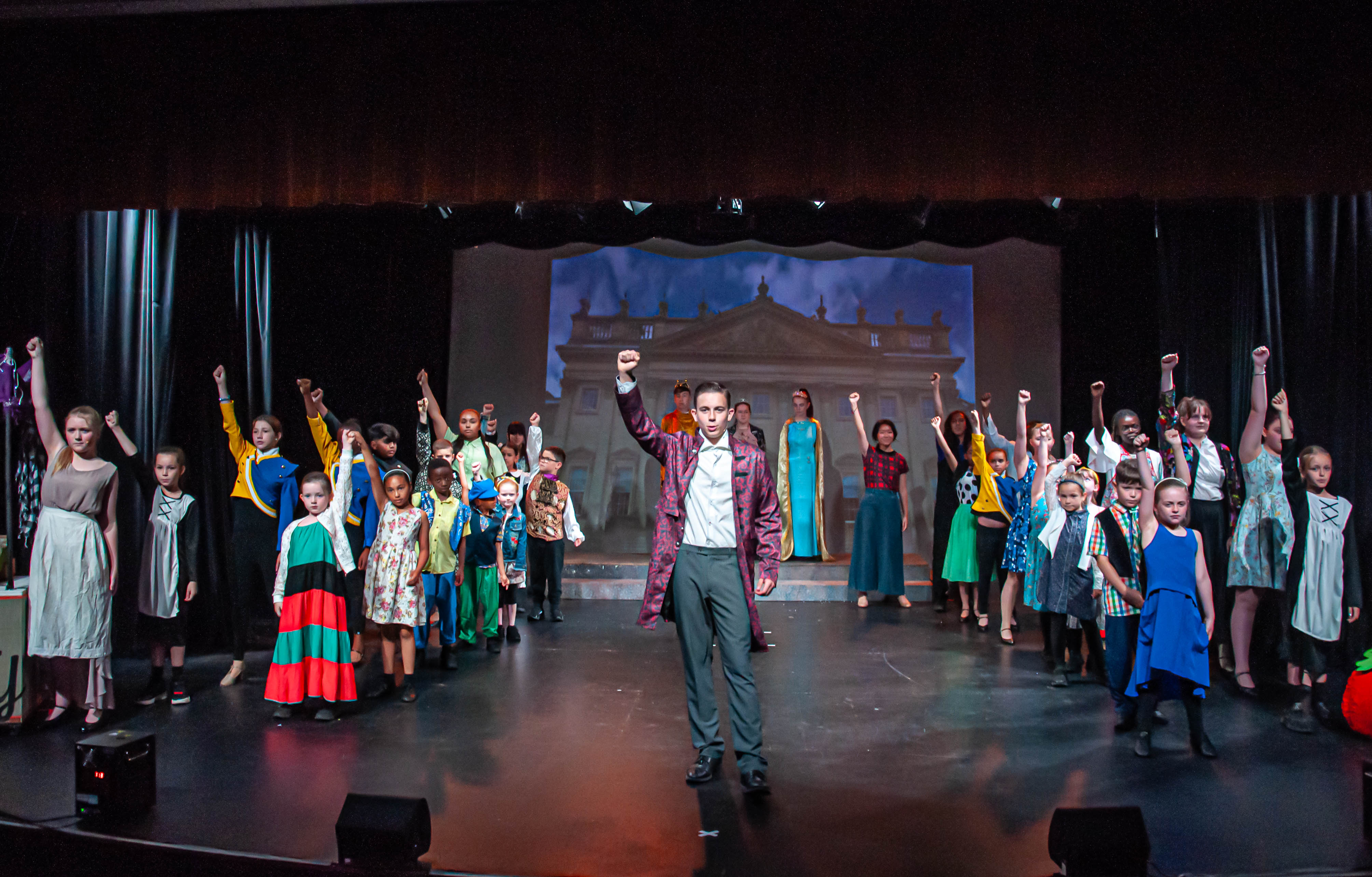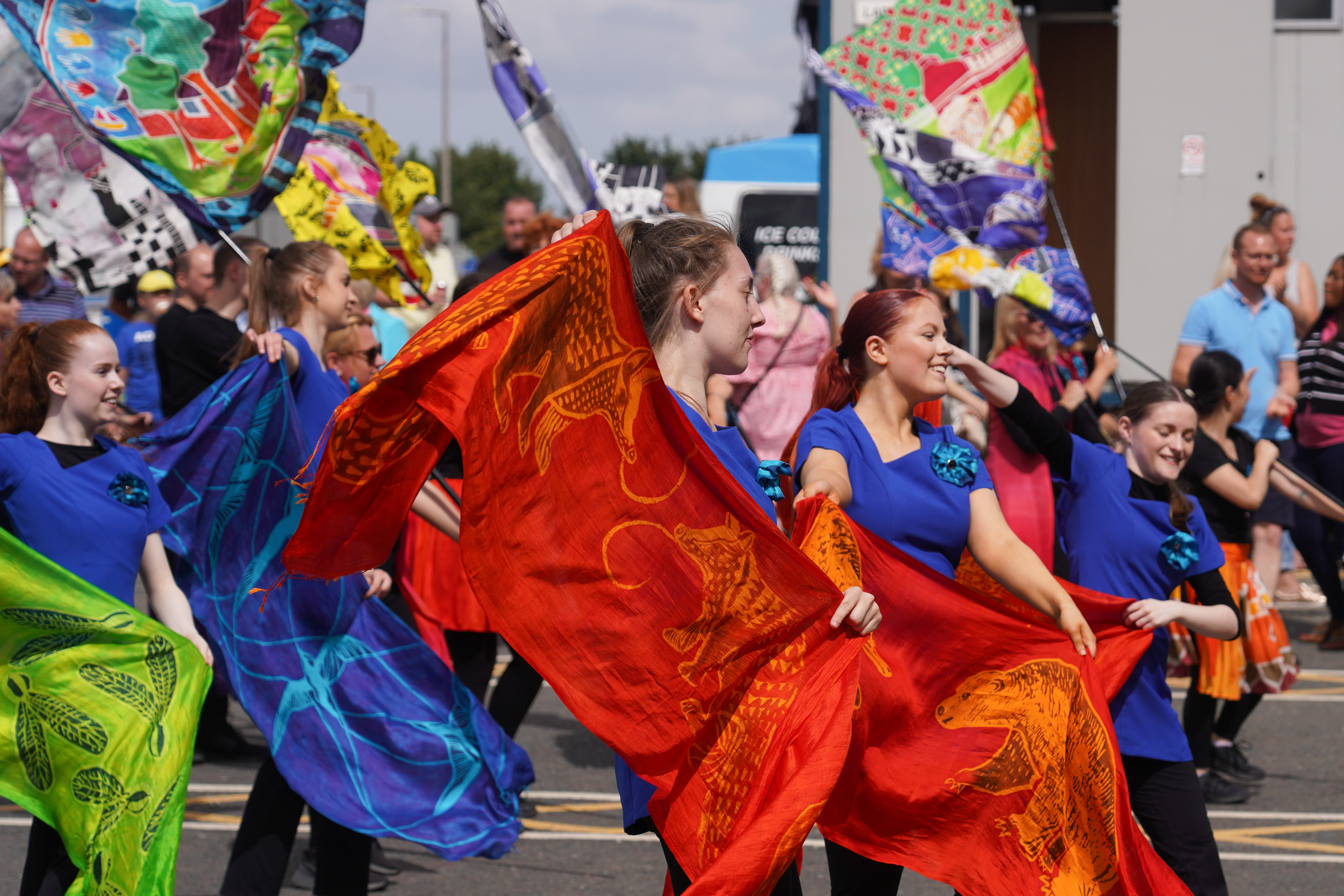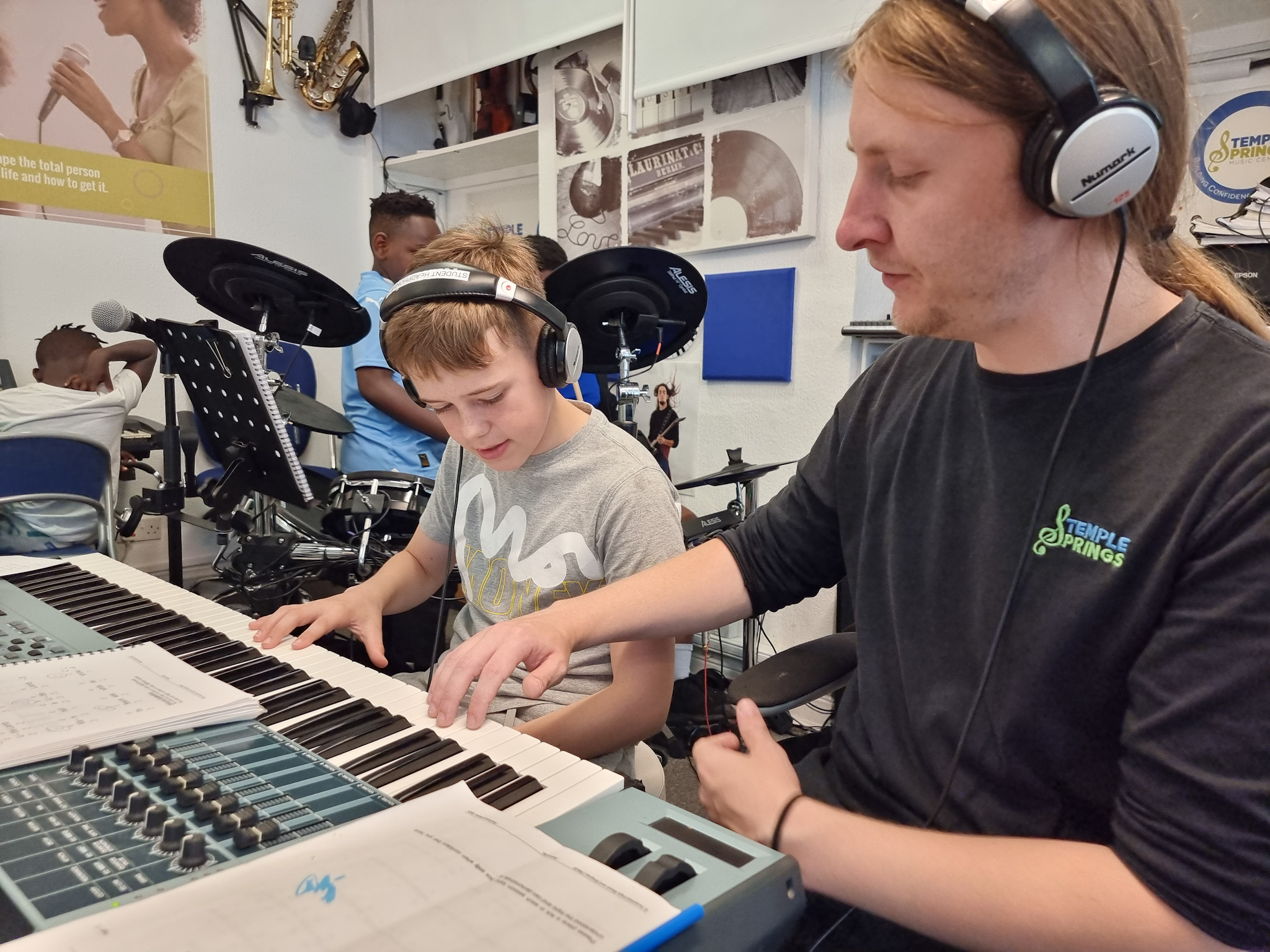Thurrock Plan for Culture - Where do we want to be?
Where do we want to be?
Looking forward, there are a number of actions that surfaced through the discussions, research and engagement behind this Plan. Together they form the foundations for a 4-year action plan (see Appendix 1) that will create the building blocks and a strong evidence base for 5-10 year visioning, planning and prioritisation.
Cultural Offer
There is real opportunity to increase community connections by growing and diversifying Thurrock’s cultural offer. Data from Arts Council England tells us that cultural engagement levels are low in Thurrock with 64% of local people not engaging frequently. Start Thurrock is an Action Research programme, with ongoing, built-in evaluation activity and far-reaching data collection and is beginning to make a positive difference in growing audiences and enabling doorstep opportunities to experience culture. Early evaluation suggests, activating grass roots cultural leadership and programming in non-traditional spaces which is co-created and reflective of resident’s interests is helping culture to feel meaningful and relevant. Start Thurrock has the potential to have a catalysing effect, leveraging new investment and opportunities for Thurrock’s creative and cultural sector to test new approaches to cultural engagement and co-production. Start Thurrock is anticipated to be operational until 2029, covering the lifespan of the Plan for Culture. The learning from Start Thurrock is rich and as part of the action plan will be shared widely across stakeholders and used to inform programming and engagement approaches.
Thurrock has the potential to elevate its events and festivals offer to meet public demand. A coherent and coordinated annual calendar will be co-planned by event organisers and producers. This will raise the profile of the breadth of public engagement activity and offer excellent opportunities for cross-promotion.
Establishing an events and festival steering group will help to facilitate this and enable partners to explore resource sharing. For example, Start Thurrock in partnership with Thurrock CVS is developing a pool of volunteer Community Researchers to support data collection and evaluation at events. The intention is that the Community Researchers will receive interesting opportunities and incentives across Thurrock – not just those provided by Start Thurrock. Similarly, Arts Outburst is training event assistant volunteers to support its outdoor work, and there could be potential to expand the programme more widely. Volunteering opportunities also feature within the Back on Track heritage programme led by Tilbury on the Thames Trust.
Galvanizing a collective voice though this steering group will enable improved marketing, that reaches broad audiences. Residents told us that the relevance and quality of marketing was a deciding factor in whether they felt a cultural experience was ‘for them’. Despite the efforts of event and festival organisers to grow and diversify audiences, marketing materials do not always promote inclusivity or accessibility. Promotional messages and engagement materials should be market and audience tested at design stage, supported by the events and festivals steering group.
Talent Pipeline
The need to support the talent pipeline and create the conditions and environment for creative growth is essential for a thriving cultural ecology. Recent National Lottery Project Grant (NLPG) data from Arts Council England indicates that Thurrock creatives and cultural organisations are not finding enough local opportunities to make work with 77.1% of grants awarded to organisations and artists in Thurrock between 2021 and 2023 supporting activity taking place outside Thurrock. Equally and strikingly, 100% of grants given to individual artists and creative practitioners also supported creative work outside our area. The figures back up anecdotal feedback that creatives are working elsewhere where opportunities are easier to come by.
Stopping the drain of talent and ideas from Thurrock is urgent and this plan for culture is our opportunity to secure our creative future by investing in our creative workforce, providing space and support systems that allow them to springboard their place in growing a vibrant local creative economy.
Space
The recent More than a Place Report, commissioned by the Association of South Essex Local Authorities (ASELA), looked at what the local creative and cultural sector needs to thrive. The report identified that for Thurrock creatives there are high levels of need for workspace (75% of respondents) and project space (88% of respondents). Demand for affordable and flexible space for working, sharing, rehearsing, exhibiting and leading participatory/community-based activity outstrips supply. And yet, there are tangible opportunities within Thurrock to open up spaces for creative and community use and the partners in place who can help this happen, starting with an approach to activating meanwhile use that is underpinned with seed funds for demonstrator projects from Creative Estuary and Start Thurrock. Furthermore, there may be additional support and investment in temporary and meanwhile-use through Towns Fund in Grays and Tilbury.
Thurrock’s Meanwhile Opportunities Strategy - produced in 2023 – is underpinned by this plan and provides a framework and assessment tool to evaluate opportunities to bring underused buildings and land into temporary use for creative and mixed use, helping to enliven spaces and nurture creative clusters. By activating sites for creative use and cultural programming, our sector can test ideas and concepts, growing its capacity and connectivity.
There is an urgency to bring forward flexible and affordable space for creative use. The call from the creative and cultural sector about the need for space has been consistent across recent consultations including the ASELA report and local ‘supply and demand’ studies. Delaying addressing this risks talent being stifled and creatives not reaching their full potential. Furthermore, the conditions for access and usage of space should be straight-forward and allow for experimentation and risk-taking; the climate is not conducive to tying creatives into long-term commitments. Securing building-based growth and future-proofing audiences and revenue streams to sustain long-term viability is a challenge in Thurrock.
People have told us, through recent consultations, that supporting and growing local, community focussed places and spaces, which deliver a variety of creative and cultural services ‘under one roof’, such as the Thameside Complex, are important to them because of the long-standing positive impact they have on the communities they serve.
Environmental Sustainability
There is widespread recognition that urgent action is needed to tackle climate change, and in response to this call to action, Thurrock Council declared a climate emergency in October 2019. Environmental responsibility is embedded in Arts Council England’s 10-year investment strategy (2020-2030) which sets out an expectation that the cultural organisations will strengthen their commitment to the environment and promote the need for environmental responsibility within the communities in which they work. Thurrock’s cultural sector will be encouraged to engage in activities to reduce their carbon emissions and to support the sector and communities to reduce their energy usage through the delivery of eco-conscious and sustainability themed events, activities and advocacy.
Sector Support
Creative workspaces are environments that enable networking. Investing in networks breeds knowledge exchanges, new ideas and strengthens support systems amongst creatives, particularly freelancers. Creative networks in Thurrock should be nurtured with new networks formed around creative clusters and purposeful networks established for young, emerging creatives.
Various studies including the recent Place Matters: Local Approaches to Creative Industries state that growing creative skills is the largest unfulfilled priority for sector development. Capacity building to develop expertise and knowledge will support Thurrock’s sector to grow and a suite of sector support opportunities should be developed through a co-planning and co-investment approach. Harnessing the power of technology and digital platforms should be given particular focus in capacity building. Equipping the sector with the skills and knowledge to embrace technological developments will grow the resilience and dynamism of the sector and enhance the accessibility of cultural content.
Resources
This plan highlights examples of positive outcomes and success stories, which demonstrate that it is possible to make a difference at a local level, see sustainable growth and provide optimism. In Thurrock, support for strengthening the value and impact of culture is growing across stakeholders, and the public and private sector, which is helping to lever new partnerships and diversify investment in culture. Nevertheless, it is clear that systems are straining, budgets are drained and priorities are stretched nationally.
Thurrock Council has a new operating model and as such, will act as an enabler and facilitator of this Plan, rather than a commissioner or direct deliverer. The Council has committed to supporting the coordination of creative and cultural opportunities, utilising funding from the UK Shared Prosperity Fund, working with partners to shape future actions that will realise this plan.
With a challenging and competitive climate for drawing public and private investment, a collaborative approach to fundraising tempered with realistic resource modelling will be needed. Coordinated and collaborative bids and smarter targeting of resources will be underpinned by robust and shared evaluation frameworks, drawing on the collective input from the Cultural Leaders Group, which can create aggregated evidence of impact that will grow confidence in stakeholders and investors.
Investing in experimentation and emerging talent, drives innovation and expansion. Where funds exist in the Thurrock-wide system there needs to be a joining of forces and resources to create a ‘test bed’ fund that catalyses new creative ideas, strengthens practice and raises ambition. The advance of digital technologies and how they support cultural innovation and content should not be overlooked or downplayed in any future-facing seed funding and action planning.
Finally, for the creative ecosystem to thrive, support and opportunity should be balanced and diverse. More equality of opportunity across the whole sector, avoiding an over reliance on a few people or organisations (who are already stretched) would enable a range of creatives – at all stages of development - to contribute and have the opportunity to grow. Inviting creatives and cultural organisations into Thurrock could encourage new ideas but should be approached strategically, and as a way of growing a broad, place-based offer and not transplanting in projects developed for elsewhere.
Cultural Compact
Ensuring sustainability of Thurrock’s ambition to work collaboratively, with shared creative and cultural ambition and goals, the development of a Cultural Compact will be explored, drawing on lessons learned from the Arts Council England and Department for Digital, Culture, Media and Sport (DCMS) Cultural Compact 2019 programme, which supported the creation of 20 Cultural Compacts across the UK. Establishing a Cultural Compact for Thurrock will create a partnership, which includes business, local authority, health, education and the cultural sector, to support local arts and culture by increasing connectivity between the cultural sector and broader local aspirations.
Young People
Engaging with young people in the development of this plan revealed divergent pathways into creative employment. Traditional routes are suitable for some young people, but for many we spoke to, there is limited flex or ‘real life’ experience in post 16 options. In addition, some young people told us that support systems were not visible or relevant to pursuing creative work. We heard of DIY approaches involving social media, informal learning and accessing mentors and role models ‘beyond the norm’ were helping young people to progress and find exciting opportunities. Linked to this, some young people feel deterred from ‘established’ training and work experience models which feel narrow and incompatible to how they want to work and earn. Young people are motivated by ideas and opportunistic experiences and are happy to move laterally across roles and jobs, rather than taking a linear route.
We also heard that young people do not always see themselves, their cultures or interests represented in the local cultural offer. There is limited representation to allow young people to feel that the sector or artforms are open to them.
Finally, we found that formal post 16 creative qualifications, apprenticeships and work experience available in Thurrock fell below some young people’s radar. Greater visibility and prominence of doorstep creative career pathways is needed.
If Thurrock is to grow the talent pipeline, by nurturing and retaining a diverse and ambitious workforce, then young people’s needs, interests and support systems must be at the heart of this plan for culture.
Education
Without any statutory arts education as part of the current school curriculum, the plan for culture must recognise the need to stimulate opportunities to benefit our young people’s future.
The plan must find a way to retain and build on recent cultural education infrastructure investment – including Thurrock Trailblazer, Thurrock’s Cultural Education Partnership and Music Education Hub - to sustain the benefits and energy of local leaders and champions of cultural opportunity for children and young people. There are also a number of local cultural organisations who have received support and funding in recent years from Arts Council England’s Bridge programme to develop their learning offer. For organisations including Complete Commedia Company, Rendered Retina, Thurrock Musuem, Everwright Foundation and Temple Springs, dedicated support, training and resource from the Bridge was catalytic in strengthening and sustaining each organisation’s schools and education work. The Bridge programme has come to a close, leaving no strategic support or funds for organisations and partnerships. A dedicated networking group for cultural learning could support local organisations and education providers to stay informed of current practice and opportunities, and Royal Ballet and Opera (which successfully led the Bridge programme in our region until 2023) may be well placed to convene informal networking locally.
Economic Growth
For centuries, Thurrock has never stood still. A constant ebb and flow of goods, ideas and people through time and throughout the world have sparked innovation, social change and cultural exchange. Thurrock’s location as the fulcrum of the Thames Estuary – Gateway to the Globe - underpins major investments in regeneration, infrastructure and industry, representing a watershed moment to transform expectations for living, working, learning and socialising here.
As yet, the trickledown effects of industrial investment including the Thames Freeport, are not clearly articulated or tangible in relation to creative growth, which should be addressed as the plan for culture beds in, and the ambitions are profiled with business and industry leaders.
Cultural hubs
A focus on driving up a cohesive cultural offer in Grays, Tilbury and Purfleet-on-Thames and fostering creative clusters in these locations would create dividends for the whole of Thurrock. Cultural hubs contribute towards place-making, integrated and active communities and ultimately, improved quality of life.
Major regeneration and projected housing growth in and around these locations, underpinned by the emerging Thurrock Local Plan, will change the shape of these areas and a joined-up, integrated and strategic approach to growing cultural potential will be needed for success, along with the following principles and actions:
- A strong vision in each place, that plays to local cultural strengths and distinctiveness will increase the visibility of different forms of culture and more pride in place.
- Animating and energising different places and spaces will unlock community assets, support social networks to develop and increase community participation and civic engagement.
- Establishing equal access to these spaces for all residents supports inclusion, promotes wellbeing, and reduces marginalisation.
- Creating integrated spaces that foster collaboration and opportunity to connect with and build the resilience of local communities.
- Nurturing and supporting creative micro-clusters, providing seed funds and creating the conditions for culture to take root, will accelerate creative sector growth.
- Ground up approaches to cultural development with people at the centre will support ‘buy in’, longevity and more resilient communities.
Leadership
Finally, positioning this plan to leverage the benefits and raise the profile of culture should be through a strategic cultural leadership group, with clear goals and cross-sector representation. It is acknowledged that Thurrock has a number of steering groups and committees already established to support the development and delivery of creative and cultural activities, however there is a need for an overarching group build on these existing networks, to establish a clear direction, enable collaboration and amplify positive outcomes. By aligning with cross-cutting agendas, the role culture plays in local areas will be amplified and the potential to harness new, additional resources will be greater.
Membership to a cultural leadership group should be diverse, inclusive and representative of Thurrock communities. Different experiences, knowledge and interests feed new ideas, cross-fertilisation and crucially, challenge assumptions. Where new members may not have the skills to fulfil a leadership role, orientation and training should be offered.



